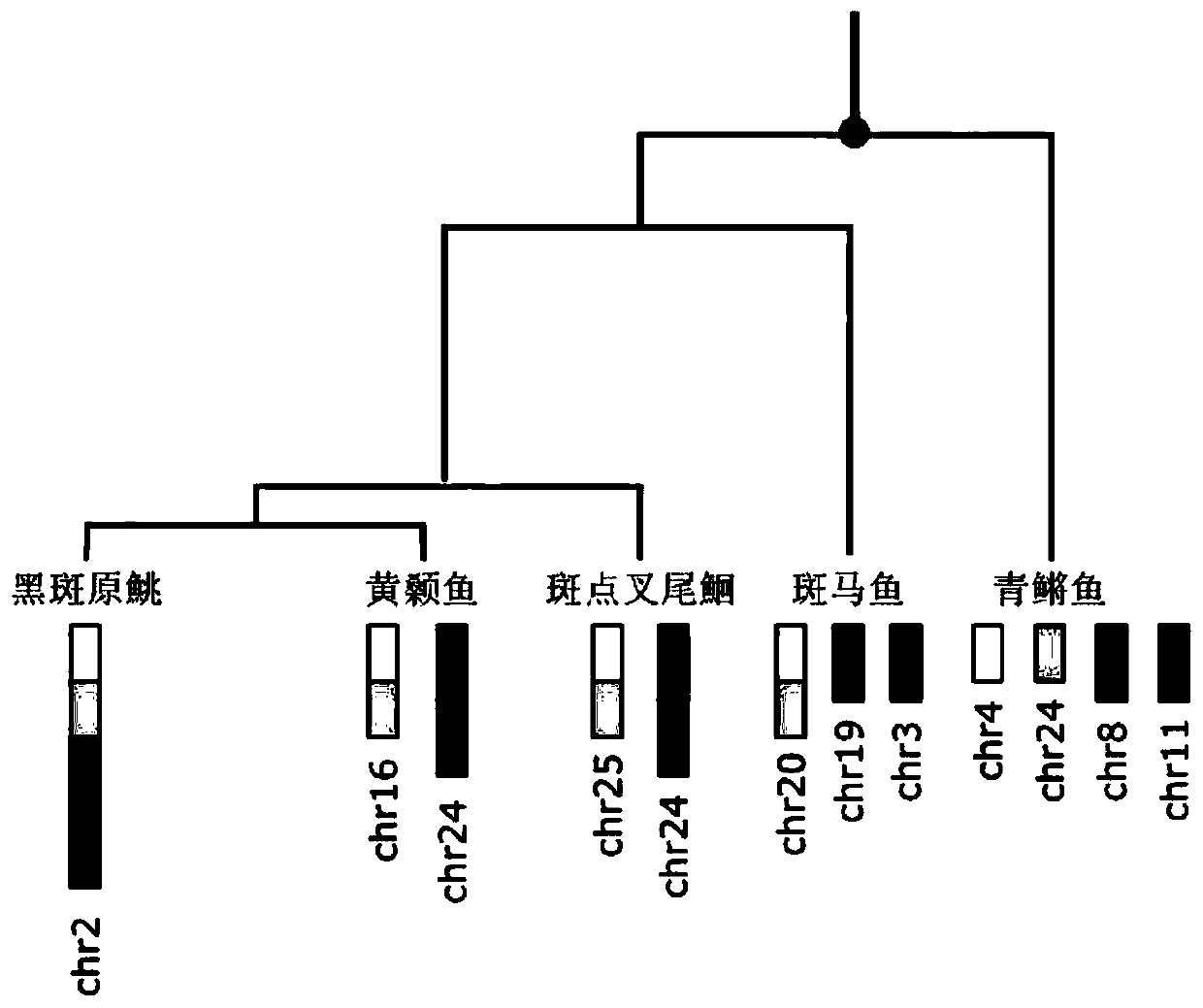Method for comparative analysis of ancient chromosome evolution of sisoridae fishes
A technique for comparative analysis, chromosomes, applied in evolutionary biology, sequence analysis, instrumentation, etc.
- Summary
- Abstract
- Description
- Claims
- Application Information
AI Technical Summary
Problems solved by technology
Method used
Image
Examples
Embodiment 1
[0026] Example 1: Material acquisition
[0027] In this experiment, a species of fish that is endemic to the Tibetan Plateau, the black-spotted catfish, was used as the research object. Adult female black-spotted catfish caught in the wild from the Yarlung Zangbo River. After recording the basic traits and indicators, take the fins and freeze them with liquid nitrogen for one hour, and store them in the refrigerator at -80°C.
Embodiment 2
[0028] Example 2: DNA extraction of P. black spot and third-generation long-segment genome sequencing and genome contig assembly The traditional phenol method was used to extract the genomic DNA of P. black spot. The specific method was to grind the sample into powder with liquid nitrogen. Add 1 mL of digestion solution and let stand at 37°C for 5 hours. After cooling down to room temperature, take 0.5 mL of phenol, mix and centrifuge at 4000×g for 10 min, and suck out the water phase. Add 0.5 mL of a mixture of phenol, chloroform and isoamyl alcohol for DNA extraction and extract twice again, extract the aqueous phase and add NaCl to a concentration of 0.3M. Add ethanol, centrifuge at 3000×g for 15 min, rinse twice with 70% ethanol, suck out the supernatant, and dry in the air. The powder sample was suspended in TE, NaCl was added to 100mM, RNase A was added to a concentration of 100ug / mL, and after being kept at 37°C for 3hrs, SDS was added to a final concentration of 0.2%....
Embodiment 3
[0030] Example 3: Hi-C tissue library construction, sequencing and chromosome assembly of P.
[0031]Take fresh P. black spot muscle tissue, use a cell sieve to obtain cell suspension. Use 37% formaldehyde for formaldehyde treatment. After being treated with SDS and Triton, centrifuge to remove the supernatant, resuspend the precipitate with restriction endonuclease buffer, add different amounts of restriction endonuclease HindⅢ-HF, and digest overnight at 37°C on a rotary mixer. After enzyme digestion, choose a low temperature of 23°C for end-filling labeling. Centrifuge the blunt-end product at 500g at 4°C for 2min at low temperature, remove the supernatant, resuspend the pellet with 1×T4 DNA Ligase Buffer, perform blunt-end ligation in a 250µL ligation system according to the amount of ligase of 1-2 Cohesive unit / μL, and ligate at 16°C for 4- 8h. Add NaCl with a final concentration of 200mmol / L and proteinase K at 1μg / μL to the ligation product, decompose the cross-link ...
PUM
 Login to View More
Login to View More Abstract
Description
Claims
Application Information
 Login to View More
Login to View More - R&D
- Intellectual Property
- Life Sciences
- Materials
- Tech Scout
- Unparalleled Data Quality
- Higher Quality Content
- 60% Fewer Hallucinations
Browse by: Latest US Patents, China's latest patents, Technical Efficacy Thesaurus, Application Domain, Technology Topic, Popular Technical Reports.
© 2025 PatSnap. All rights reserved.Legal|Privacy policy|Modern Slavery Act Transparency Statement|Sitemap|About US| Contact US: help@patsnap.com


